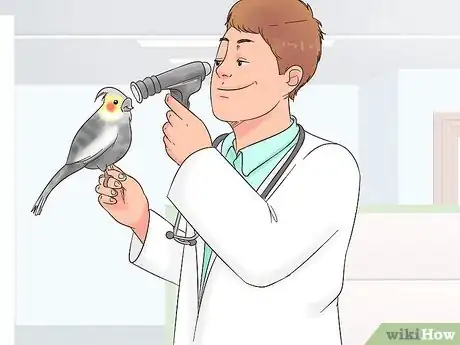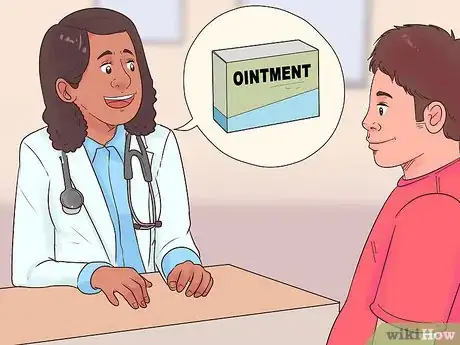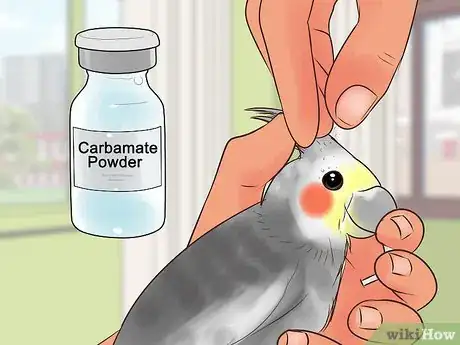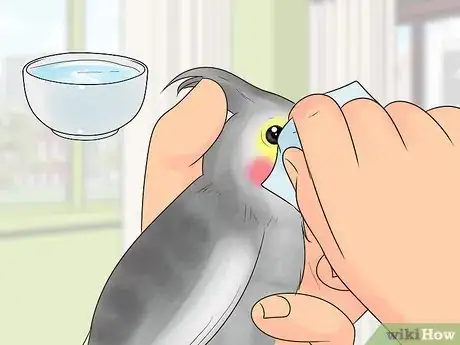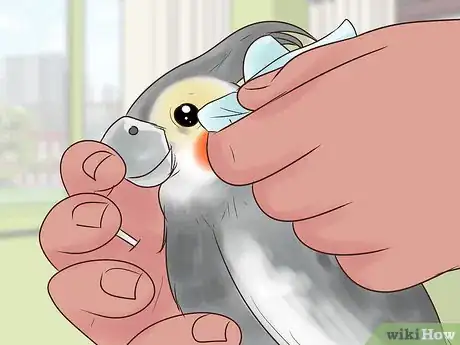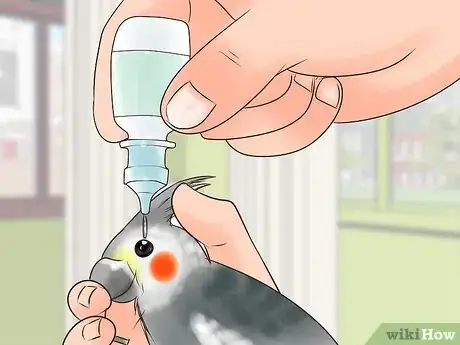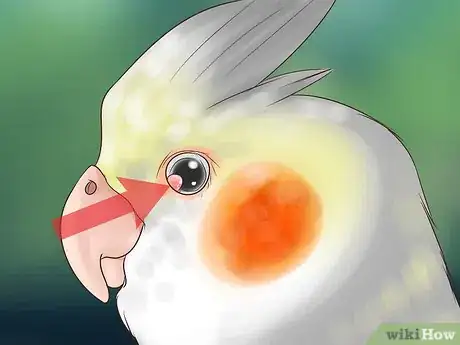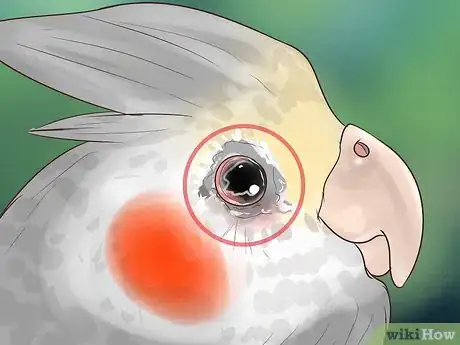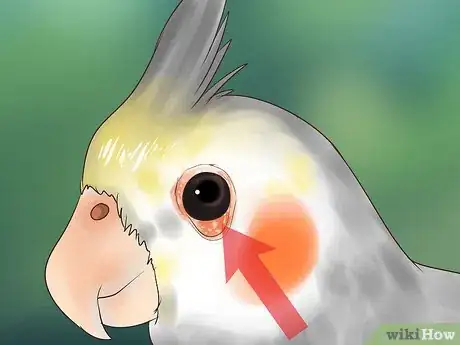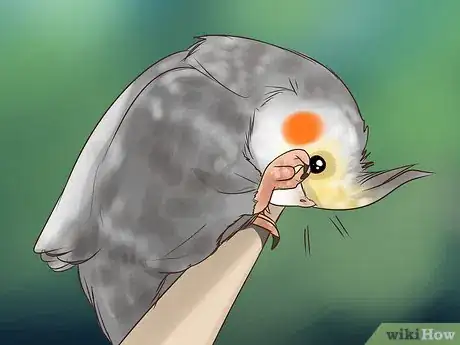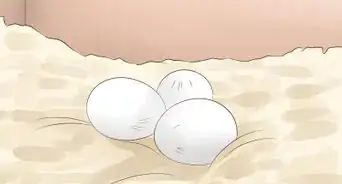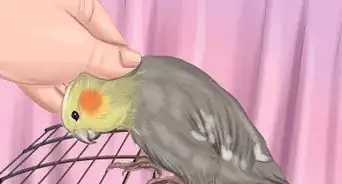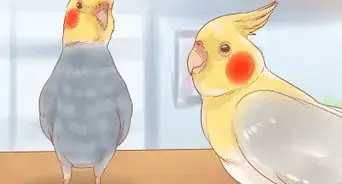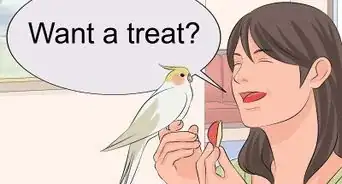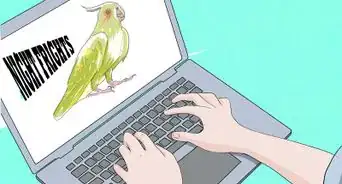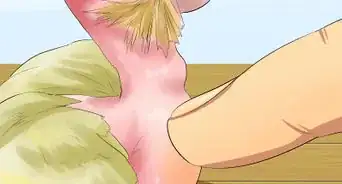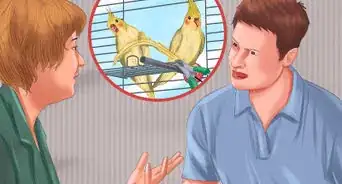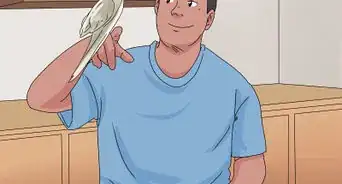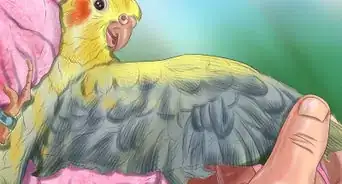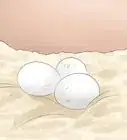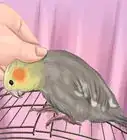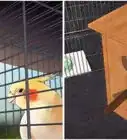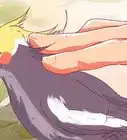This article was co-authored by Melissa Nelson, DVM, PhD. Dr. Nelson is a Veterinarian who specializes in Companion and Large Animal Medicine in Minnesota, where she has over 18 years of experience as a veterinarian in a rural clinic. She received her Doctor of Veterinary Medicine from the University of Minnesota in 1998.
This article has been viewed 74,828 times.
Conjunctivitis occurs when your bird has swollen, irritated membranes around the eye. Your cockatiel's conjunctiva is the tissue between its eye and eyelid, which you can see if you gently lift up the eyelid. In a healthy bird, the conjunctiva is pale pink.[1] Conjunctivitis can be caused by a variety of different things, so it’s important to take your bird to the vet to diagnose the underlying cause. You can treat conjunctivitis with prescription topical ointments or drops, and by cleaning the eye at home.
Steps
Seeking Medical Attention
-
1Get your bird examined by an avian vet. The condition can be caused by a lot of different things, such as bacteria, fungi, nematodes, protozoa, and injury. Your vet will examine your bird, including lifting the eyelid. They may also test the discharge from the area to look for a bacterial or fungal infection. Your vet will also determine if your bird has an upper respiratory infection, since they can cause conjunctivitis.[2]
- There are a few other conditions that are similar to conjunctivitis, which is another reason why it’s so important to get your bird tested before treatment.
-
2Give your bird prescription medication. Your vet may prescribe topical medication, such as ointment or drops, to give to your cockatiel. The vet may also prescribe oral medications, antibiotic ointments, or sprays for the bird. For fungal infections, the vet will prescribe topical antifungals.[3]
- These medications are often only available by prescription, so you will need to obtain them from your vet.
Advertisement -
3Apply carbamate powder. If your bird has conjunctivitis due to nematodes, the small flukes will irritate the bird’s eye. To get rid of the flukes, you can apply topical carbamate powder to the eye.
- You can get this powder from the vet or a bird supply store.
Taking Care of the Eye at Home
-
1Wipe the eye with water. Since the cockatiel’s eyes are crusty, you should help clean them. Dip a soft cloth in warm water. Gently wipe and dab at the bird’s eye to remove the buildup around the membrane.[4] Be very careful to avoid touching your bird's eyeball.
-
2Clean any debris. Your bird may get conjunctivitis if debris gets into their eye. This can cause irritation and swelling. Look at your bird’s eye and see if there is any debris inside. If there is, use a warm damp cloth to gently remove it.[5]
- Common debris that can get in a bird’s eye include dust or cracker crumbs.
-
3Use eyedrops. You can help your cockatiel’s irritated eye by dropping sterile eye drops into the eye. This helps keep the eye lubricated and reduces discomfort.[6]
- You can use this if the conjunctivitis is caused by debris, or if you have to wait to take the bird to the vet.
- Be careful to only use sterile water eye drops, unless your vet provides you with a prescription eye drop.
Recognizing Symptoms of Conjunctivitis
-
1Notice any swelling of the eye membranes. The conjunctiva is the light pink membrane that surrounds the whites of your bird’s eyes. When they have conjunctivitis, this membrane gets inflamed. Look for red or irritated areas around the bird’s eyes.[7]
-
2Look for crusting around the eyes. Birds that have conjunctivitis may also produce a clear or cloudy discharge from their eye. This causes a crusty, thick build up around the area. It may crush along the swollen membrane, or get inside the bird’s eyes.[8]
-
3Check for eyelid irregularities. Another symptom that may occur with conjunctivitis is problems with the eyelid. The lower eyelid may droop or hang down slightly. The bird may also have a prolapsed third eyelid, where you can see the reddish membrane.
- A bird's third eyelid is a nearly clear membrane that allows the bird to clear dirt and debris from its eye while still maintaining nearly clear vision.
-
4Monitor for excessive preening. Birds with conjunctivitis may start to preen more than they used to. You may notice that the feathers around the eyes are wet, or that the feathers on the wing or leg are wet and matted due to increased rubbing.[9]
-
5Watch for rubbing of the eye. Some birds may rub the eye repeatedly against their cage or try to scratch the eye with their foot or wing. They may even rub the infected eye with the ball of the foot.[10]
References
- ↑ http://animals.mom.me/cockatiel-eye-disease-12240406.html
- ↑ https://www.beautyofbirds.com/avianconjunctivitis.html
- ↑ https://www.researchgate.net/publication/11215668_Conjunctivitis_in_birds
- ↑ https://www.petco.com/content/petco/PetcoStore/en_US/pet-services/resource-center/caresheets/cockatiel.html#
- ↑ https://www.researchgate.net/publication/11215668_Conjunctivitis_in_birds
- ↑ http://www.cockatiel.com/eyes.html
- ↑ https://www.beautyofbirds.com/avianconjunctivitis.html
- ↑ https://www.researchgate.net/publication/11215668_Conjunctivitis_in_birds
- ↑ https://www.researchgate.net/publication/11215668_Conjunctivitis_in_birds
About This Article
If you notice swelling around your cockatiel's eye membranes, crusting around its eyes, or other eyelid irregularities, it may have conjunctivitis and will need to be taken to an avian vet. Once your vet confirms your cockatiel has conjunctivitis, they will likely recommend a prescription ointment or drops, but may prescribe oral medications, antibiotic ointments, or sprays as well. If your bird's conjunctivitis is because of nematodes, small flukes will irritate your bird's eye. To get rid of flukes, purchase a carbamate powder from your vet or a bird supply store, then apply it to your bird's eye. You can also care for your bird at home by giving it sterile water eye drops and removing crusty buildup from around its eye with a soft, warm, wet cloth. For more tips from our Veterinary co-author, including how to clean debris from your cockatiel's eyes when it has conjunctivitis, keep reading.
